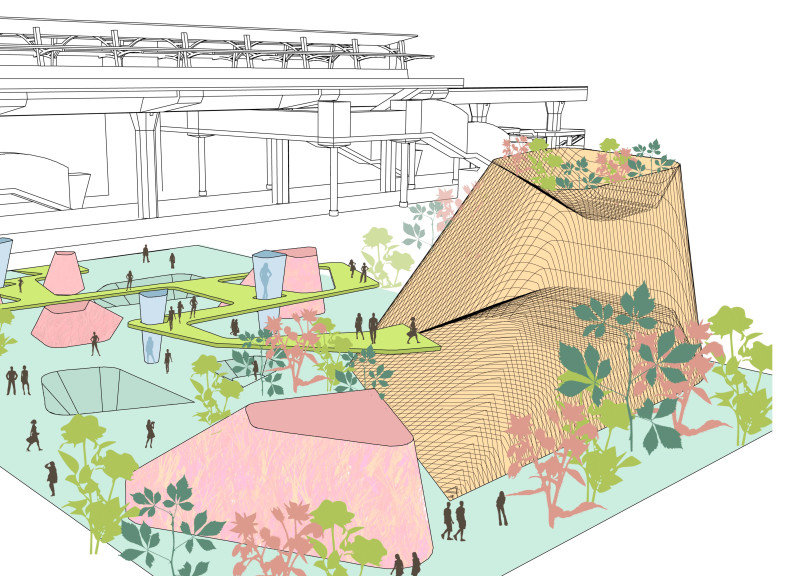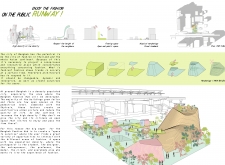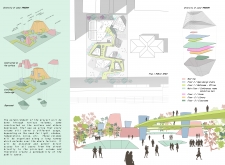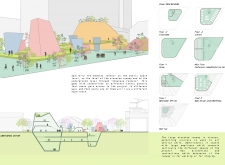5 key facts about this project
## Overview
The Bangkok Fashion Hub is strategically located in a densely populated area, aiming to serve as a key component of Thailand's expanding fashion sector. Designed as a multifunctional space, it caters to both fashion practitioners and the general public, fostering community engagement while positioning Bangkok as a significant player in the global fashion industry. The design emphasizes connectivity and accessibility, integrating a variety of public and private spaces that reflect the dynamic nature of fashion.
## Architectural Strategy and Materiality
The project's architectural morphology features uniquely shaped volumes that evoke the concept of folded fabric, symbolizing the essence of fashion while allowing for distinctive design expression. An elevated runway serves as a central axis, facilitating movement through the hub and providing users with diverse spatial experiences. Key structural elements include depressed and elevated forms that enhance interactions with light and shadow.
Sustainability is a priority in material selection, featuring modern materials such as metals for structural integrity and plastics in facade elements, reflecting contemporary aesthetics. Additionally, fabric and glass are incorporated to convey themes of adaptability and transparency, linking the interior with the exterior environment. The design utilizes eco-friendly materials and promotes natural ventilation, decreasing reliance on mechanical systems while integrating greenery to bolster urban biodiversity.
## Program Functionality and User Engagement
The hub encompasses a range of specialized spaces, including an exhibition hall for fashion events, collaborative open studios for designers, and educational facilities for aspiring fashion students. Social spaces, such as cafes, encourage community interaction, making fashion accessible to a wider audience.
Accessibility is enhanced through an elevated footbridge and showcase tunnels, which facilitate safe and engaging movement throughout the space. User experiences emphasize interaction and participation, with installations and dynamic facades that reflect current fashion trends. The design's flexibility allows for space adaptability, ensuring that the hub can evolve in response to shifting fashion paradigms while maintaining its relevance and functionality.






















































